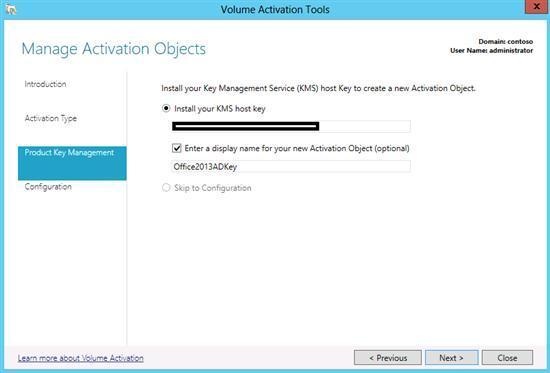
This document shows how to convert Microsoft Office 2013 or Microsoft Office 2016 to and from KMS activation and MAK activation, as well as help determine which activation type is currently in use. These activations are available for faculty and staff using departmental machines. Please note that only Office Pro Plus can use KMS or MAK activation. Other editions are not compatible. These instructions only apply to machines running Windows Vista, 7, 8.1, or 10. Machines running macOS do not use KMS or MAK activation. Instead, the Microsoft Volume License Serializer is run on a machine to create its own unique license file.
KMS activation works only with enterprise versions i.e. Volume license editions. Get hold of a VL edition of Office Pro Plus from the well known place, install and then activate with KMS.
This serializer can be found on the Campus Software Library under the section for Microsoft software. See for the full details of MAK and KMS activation at UW Madison.
Contents: • • • Converting Microsoft Office 2013 or 2016 from KMS to MAK Activation. • If you are affiliated with the University, email to request the University's Office 2013 or Office 2016 MAK activation key, otherwise use the product key which came with your copy of Office. • Launch Microsoft Word 2013 or Microsoft Word 2016 • Click the File tab. • Click Account. • Click Change Product Key under Product Information. • Enter the MAK activation key from the email in the field provided. • After you enter a good key, you will get the green check mark and the Continue button will change to an Install button • Click Install.
• An additional alert may appear in the taskbar. If so, click it and select Yes.
• Exit Microsoft Word. • Launch Word. Neutraface font free download. • Click the File tab • Click Account. Under Product Information, Word should report that it is activated. • Launch a command window with elevated privileges • Type cmd in the Search bar to locate the command window. • Right-click on cmd or Command Prompt and click Run as administrator from the context menu • Click Yes at the User Account Control prompt to open the command window with elevated privileges.
• Launch a command window with elevated privileges • Type cmd in the Search bar to locate the command window. • Right-click on cmd or Command Prompt and click Run as administrator from the context menu • Click Yes at the User Account Control prompt to open the command window with elevated privileges.
Note In the tables that follow, 'LTSC' stands for 'Long-Term Servicing Channel,' while 'LTSB' refers to the 'Long-Term Servicing Branch.' To use the keys listed here (which are GVLKs), you must first have a KMS host running in your deployment. If you haven’t already configured a KMS host, see for steps to set one up. If you are converting a computer from a KMS host, MAK, or retail edition of Windows to a KMS client, install the applicable setup key (GVLK) from the following tables. Shabloni dlya prezentacija s kazahskim ornamentom. To install a client setup key, open an administrative command prompt on the client, type slmgr /ipk and then press Enter.

If you want to use these resources Activate Windows outside of a volume-activation scenario (that is, you’re trying to activate a retail version of Windows), these keys will not work. Use these links for retail versions of Windows: Fix this error that you get when you try to activate a Windows 8.1, Windows Server 2012 R2 or newer system: “Error: 0xC004F050 The Software Licensing Service reported that the product key is invalid” on the KMS host if it is running Windows 8.1, Windows Server 2012 R2, Windows 8, or Windows Server 2012. • • • If you are running Windows Server 2008 R2 or Windows 7, be on the lookout for an update to support using those as KMS hosts for Windows 10 clients.